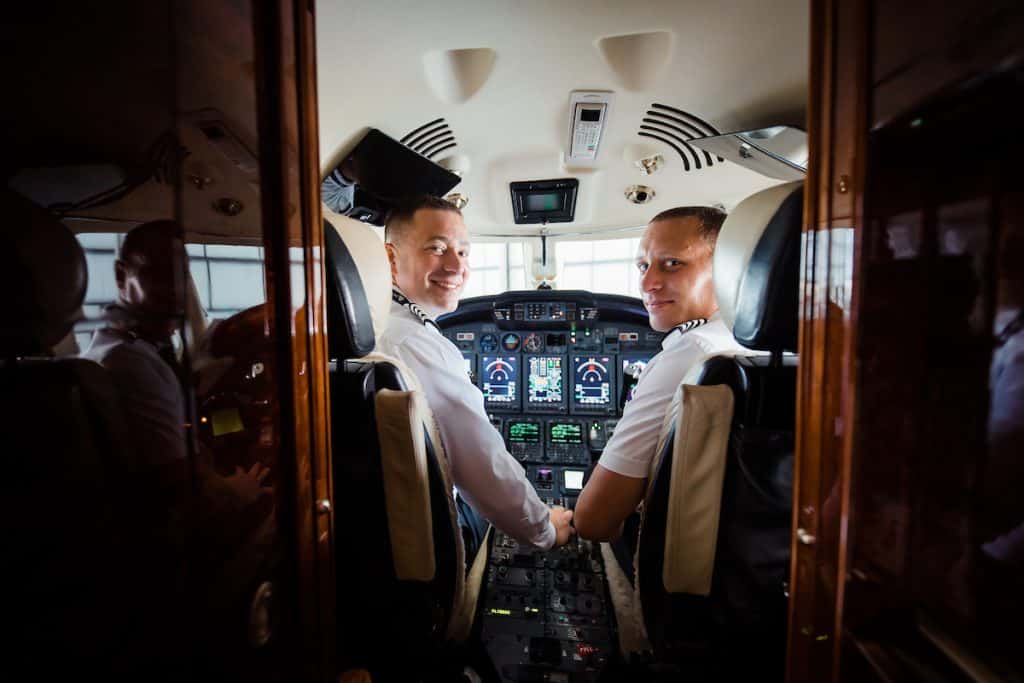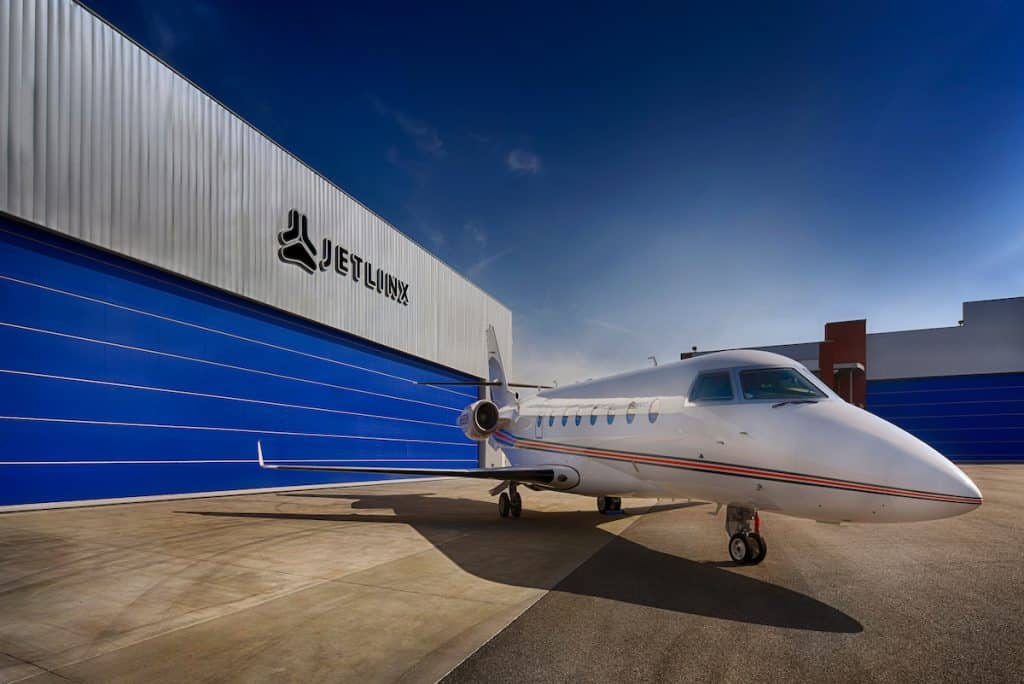Five-Star Private Jet Safety: How Jet Linx Safety Standards Rival Commercial Airlines
While Jet Linx remains well-known for offering Five-Star service to clients at more than 20 private terminals nationwide, Five-Star private jet safety is just as important as a Five-Star service experience. With a foundational commitment to safety as a principle, the Jet Linx Safety Management System (SMS) rivals that of even the largest and most established commercial airlines.
Many of the programs, Standard Operating Procedures (SOPs), and training at Jet Linx mirror the standards and policies of the largest commercial airlines in the world – airlines who fly millions of passengers each year. While Jet Linx has a smaller, closed client base, the individual safety of every passenger and Jet Linx team member is treated with the same, exacting level of care and attention of the major airlines. Jet Linx is proud to administer one of the most extraordinary safety operations in the world.
Through an open and continuously evolving safety culture, Jet Linx seeks to improve operational safety daily, while working across the industry with competitors and partners for the benefit of all. The programs shared below are just a few of the building blocks of the industry-leading SMS at Jet Linx.
Pilot Fatigue Monitoring Software
Jet Linx actively monitors pilot fatigue through Pulsar Aviation Fatigue Meter – a robust software program that is required for Part 121 operators, as well as trucking companies and other large labor-intensive workforces. Jet Linx is one of very few Part 135 private jet operators utilizing such a tool, which analyzes sleep cycles, time zones, circadian rhythm and actual hours slept by each pilot to assess fatigue risk. This information is reviewed daily by the Jet Linx Flight Operations team so they can identify high fatigue risk situations, evaluate mitigations and actively monitor developing situations. The tool also provides alerts to highlight conflicts with the rest guidelines for business aviation, which further helps Jet Linx ensure safety in the skies.
Jet Linx also takes other steps to ensure that pilots are well-rested. The Company offers pilots a minimum of eight scheduled days offer per month, far exceeding the FAA-mandated minimum of 13 scheduled days off each quarter. To ensure optimal comfort and better rest, Jet Linx pilots can choose their own hotels for overnight trips, and whenever in doubt, they are urged to call Flight Coordination teams to report fatigue so that arrangements can be made to adjust their flight schedule or source another pilot to complete the mission. Even if a pilot meets FAA rest requirements, the Jet Linx Safety team always delineates what is legal from what is safe – that is the Jet Linx difference when it comes to Five-Star safety.
“Our investment in Pulsar, our daily fatigue briefings and our understanding of how fatigue impacts safety and performance means that we have a bird’s eye-view of fatigue. We monitor and capture historical data to create fatigue risk profiles that help to mitigate future instances of fatigue. We also have a practical understanding of fatigue, always allowing pilots extra rest when necessary,” said RD Johnson, Vice President of Safety at Jet Linx.
First and Only Operator to Voluntarily Ground Fleet for Annual Safety Summit
In 2017, Jet Linx became the first U.S. air carrier to cease retail operations for a full business day, voluntarily grounding its fleet of over 100 aircraft, so its over 550 team members could come together for the all-Company Safety Summit. Since then, Jet Linx remains the only private jet operator of its size to host such an annual event, showcasing its steadfast dedication to improving its safety culture and Safety Management System. The 2022 event represented the Company’s sixth consecutive Safety Summit, even completing one virtually during the COVID-19 pandemic in 2020.
At each Summit, every Jet Linx team member actively signs the Company Safety Policy, reflecting their understanding, responsibilities and commitment to Jet Linx’s private jet safety standards. The theme of the 2022 Safety Summit, “Forward Together,” followed an agenda that included a yearly safety performance review; presentations on emergency preparedness and mental health; and impactful keynote speakers with expertise in passenger safety and crew fatigue.
“Inviting every team member into a company-wide discussion around safety practices is the best way to ensure a healthy and dynamic safety culture—everyone is involved and plays a part,” said Jet Linx President and CEO Jamie Walker. “Implementing new safety initiatives that result from the topics explored and the ideas shared by our team members is invaluable.”

Dedicated Aircraft Assignments
Jet Linx pilots are assigned to a specific tail number, a practice in place at fewer than 5% of Part 135 operators. This best practice is unique to the private aviation industry and offers pilots significant familiarity with the aircraft, fellow crew members and Base location to further mitigate risk. Each pilot assigned to a specific aircraft will have a deep understanding of its unique performance limitations, as well as a comfortable relationship with a copilot that they know and trust. Flying with the same crewmember allows a Pilot in Command to better know the strengths and weaknesses of his or her copilot, and vice versa. This dynamic creates a much safer and more collaborative cockpit.
“It’s like driving your own car compared to someone else’s. Our pilots have an intimate knowledge of the aircraft trim, allowing for masterful performance combined with the enhanced ability to trust in the abilities of one another. Just like a car, each aircraft, even of the same exact model, will perform differently. Flying the same aircraft with the same crews, day in and day out, provides more comfort and safety for both our flight crews and our passengers, delivering a Five-Star flight experience in the process,” said Johnson.
Jet Linx always flies with two pilots, no matter the size or make of the aircraft. While commercial airlines utilize two-pilot operations (a requirement by law for commercial operators), they do not usually fly the same airplane, nor do they fly with the same crews. While not legally required for Pt. 135 operators, the establishment of a two-pilot operation at Jet Linx reflects the higher standard of safety that the Company chooses to adhere to. Though it would save money and resources, moving to a single-pilot operation is not something that fits within the Jet Linx safety program.

Voluntary Reporting and Transparency
An active program among Part 121 operators for decades, the Aviation Safety Action Program (ASAP) offers participating operators access to valuable information reported by pilots, mechanics, flight attendants and flight control regarding potential hazards in the field. In 2017, Jet Linx became one of the first Part 135 operators to participate in ASAP, a program that has since enhanced the Company’s culture of learning and transparency, as well as its proactive approach to safety. Jet Linx recently expanded the ASAP program to include mechanics, flight attendants, and flight coordination team members – now covering 70% of the Jet Linx workforce.
The ASAP program invites flight crews and ground crews to self-report incidents and service improvement opportunities. When a team member files an ASAP report, the Jet Linx safety team immediately reviews it to determine if immediate action needs to be taken. The report then goes through a de-identification process where a committee composed of FAA representatives, Jet Linx representatives, pilot representatives and a Jet Linx safety analyst review reports and make recommendations to mitigate future risks. The goal of an ASAP report and review is never to penalize for mistakes, it is used as learning opportunity to improve service and safety. Because reports are always de-identified, the focus remains on the issue at hand and identifying root cause.
“The ASAP program is well established and has been an FAA program for the last couple of decades, used primarily by Part 121 operators. How we process safety events is not all that different than how commercial airlines do it, and we are proud to have in place a system that mirrors those of major airlines,” said Patrick McGuire, Senior Safety Analyst at Jet Linx.

In addition to the voluntary ASAP reporting program, Jet Linx also uses Flight Operations Quality Assurance (FOQA) and a Line Operation Safety Assessment (LOSA), both commonly used by commercial operators. The FOQA program allows aircraft operators, pilots, maintenance crews and engineers to share and analyze de-identified aggregated information as downloaded from the existing digital Flight Data Recorder (FDR) installed on aircraft. While voluntary, nearly every major airline maintains a robust flight data analysis program. Investment into FOQA for most Part 135 operators can be a heavy financial burden. Jet Linx currently utilizes FOQA data from roughly 10% of the fleet for analysis and documentation in order to regularly monitor and improve in-flight safety, with plans to continue program expansion within the fleet.
The LOSA program, while rare for Part 135 operators, is used by a large majority of commercial airlines and exists as a voluntary program at Jet Linx. Aggregate data has shown that airlines using a LOSA program outperform non-LOSA counterparts in terms of safety. Under the LOSA program, observers collect data about in-flight pilot behavior and pilot strategy to manage threats and errors. LOSA helps front line crews become better threat managers and helps build a safety culture by encouraging open and honest communication. While Jet Linx does not utilize LOSA on the entire fleet, it is often performed on international flights and on Heavy Jet aircraft. Jet Linx is part of a small fraction of Part 135 operators with the inclination and ability to adopt not only an ASAP program but also FOQA and LOSA to improve safety.
While Five-Star service is the goal for each and every Jet Linx flight experience, Five-Star safety always comes first. Mitigating risk and improving safety will always be part of our sky-high standards as we pave the way for a safer future in the private aviation industry. To learn more about the Jet Linx SMS, safety culture, and more, visit here.
Related Stories
What Does Aviation Safety Feel Like?
At Jet Linx, safety isn’t just a process; it’s a culture deeply embedded into everything we do. Let us take you behind the scenes to show how we’ve achieved – and continue to maintain – an unparalleled level of safety excellence.
READ MORE
Tails In the Air: The Jet Linx Pet Travel Experience
Whether you’re flying with a beloved dog, cat, or even a more exotic companion, Jet Linx makes the journey seamless, safe, and stress-free.
READ MORE
Travel Your Way with Jet Linx: Nassau, The Bahamas
Discover the freedom of flying private with Jet Linx when you travel to the Bahamas, a world-renowned island nation known for the beauty of its beaches and its culture.
READ MORE
Related Stories
What Does Aviation Safety Feel Like?
At Jet Linx, safety isn’t just a process; it’s a culture deeply embedded into everything we do. Let us take you behind the scenes to show how we’ve achieved – and continue to maintain – an unparalleled level of safety excellence.
READ MORE
Tails In the Air: The Jet Linx Pet Travel Experience
Whether you’re flying with a beloved dog, cat, or even a more exotic companion, Jet Linx makes the journey seamless, safe, and stress-free.
READ MORE
Travel Your Way with Jet Linx: Nassau, The Bahamas
Discover the freedom of flying private with Jet Linx when you travel to the Bahamas, a world-renowned island nation known for the beauty of its beaches and its culture.
READ MORE

Contact Us
